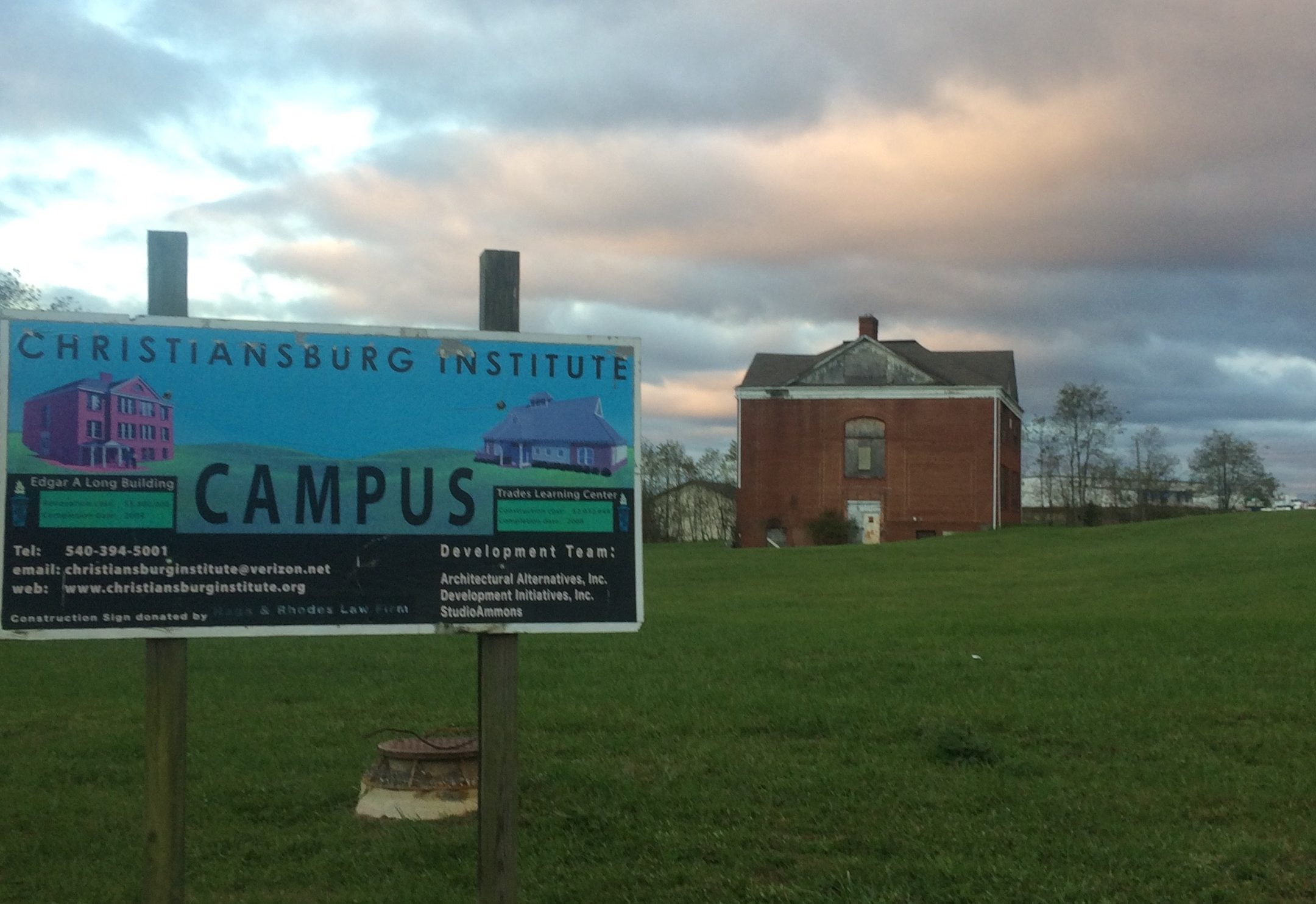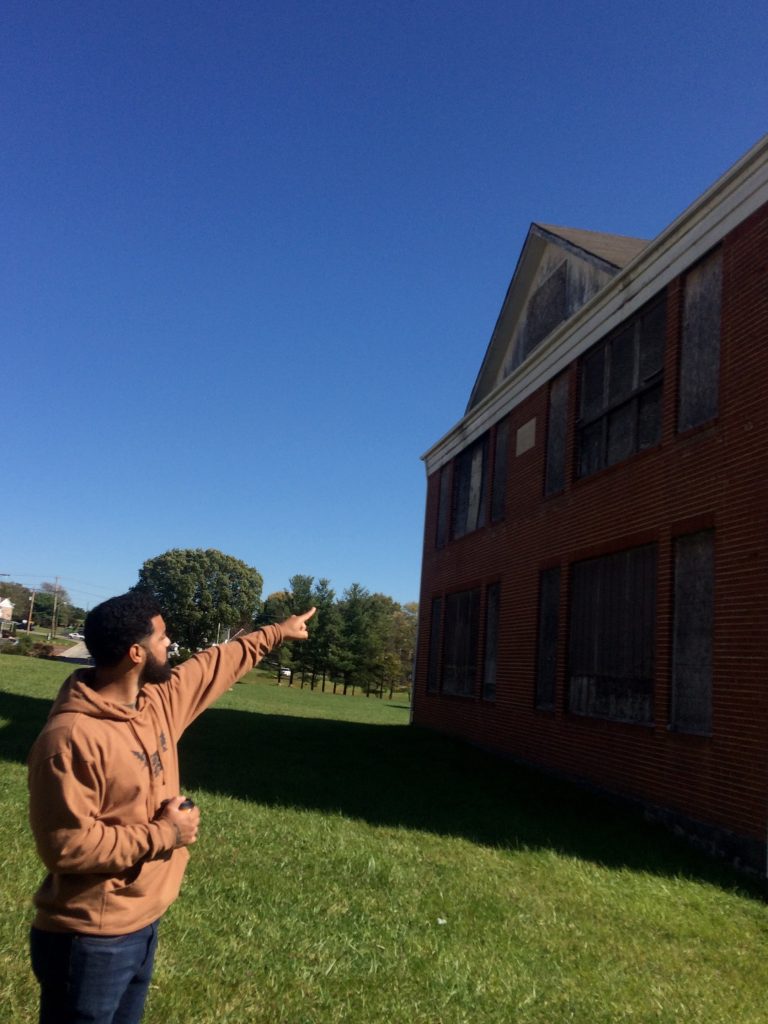Liz Kirchner
communitynews@ourvalley.org

Alumni of the Christiansburg Institute are working to restore the 1928 Edgar A. Long building on Scattergood Drive as a site for meetings and events around social justice and multicultural conversation.
In the bitter and still smoldering ashes of the Civil War, the Christiansburg Institute, a school built to educate recently enslaved people, training them for fulfilling work and confident participation in a progressive, reconstructed society, opened its doors.
Students traveled to this, “the first high school for blacks in southwest Virginia” from all over the state, by horseback and on foot in the early days, and they kept coming for the century between 1866 and 1966.
For a century, those doors stayed open. Through the vagaries of support and neglect, the school grew to 185 acres and approximately 14 buildings housing workshops, dormitories, offices and classrooms until Virginia’s begrudging slog toward desegregation closed them.
That was 50 years ago. Today, in the shadow of the derelict, but still handsome brick and marble Edgar A. Long Building on Scattergood Drive, dump trucks barrel to the salvage yards at the dead end. Development and time have built the Christiansburg High School up on Independence Boulevard, neighborhoods and the Waffle House, dissolving the original acres down to four.
Little is left in the landscape to remember the historic school and its progressive mission. But Chris Sanchez, the new Project Organizer of the Christiansburg Institute Inc., standing in the grass on a sunny October day, still sees, not just that mission, but a bright future for the school as the association seeks to revive the site as a center for social justice and multicultural conversation.

Sanchez, 28, a minister’s son, has come here from Michigan to join the alumni to do that.
“I had no previous knowledge of the Institute. Quickly, I became acquainted and realized this is really important black history that existed not only in Christiansburg and the NRV, but transcends the state of Virginia.”
Students who attended the school, no matter how briefly, founded the Christiansburg Institute Alumni Association in 1976.
“This was a high school, the first school to educate freed slaves in southwest Virginia, and relatively inexpensive,” Santos said.
The history of the school permeates the town. The Christiansburg Institute began as a primary school, the Hill School, that stood – and still stands as the Christiansburg Community Center — beside Schaeffer Memorial Baptist Church on Zion Hill, less than a mile away from Scattergood.
“That’s the actual structure. It was a primary school originally, but demand was so great, they expanded,” Santos said.
Christiansburg Institute’s past is storied and intrepid, bookended as it is by civil war and a national civil rights movement. The school lost federal funding almost immediately, but was helped by the Friends’ Freedmen’s Association, a Quaker aid society.
Booker T. Washington was an advisor supporting training in practical trades useful to the community. Students and administrators persevered through harrowing racial struggle in a Jim Crow south at its most noxious, continuing to build and to educate hundreds of people.
The tall, straight Edgar A. Long building, alone in its shining, grassy field surrounded by scrap yards stands as a crumbling monument to a past important to Christiansburg and a testament to human commitment.
But, like many, possibly most, community groups, the Christiansburg Institute Alumni Association is struggling to maintain an aging membership, rekindle awareness and youthful interest in the school, and raise funds not just to renovate the institute’s role, but to keep the roof on.
For people who are caring for the historic building and all it stands for the worries are often pragmatic. Fixing the roof of the 90-year-old building becomes more expensive every time it rains, there are taxes to be paid, and someone pilfered a stack of white marble, just carted it away in the night.
Now, Sanchez has formed a fund-raising committee. Fixing the roof is first, he said. Estimates are coming in between $50,000 and $100,000. A Windows Project is planned to restore the windows facing Scattergood Drive. That’s the back of the building. The building faces the town.
The committee envisions murals sharing stories of nearly unknown black success and contribution in the Appalachian Mountains. Ultimately, the group sees the building as a center for social justice and a place for meetings, conversation, and art.
“The African American communities and other racial and ethnic communities throughout the region are important resources for the cultural life and leadership in the Valley, which the legacy of our school can nurture and provide.”
“A lot of people labored for the success of the school and we’re now entering a new era. I’m excited to be a part of that,” Sanchez said.
To find out more about the efforts to restore the institute, visit the Facebook page: Christiansburg Institute: Revitalizing a Legacy.

